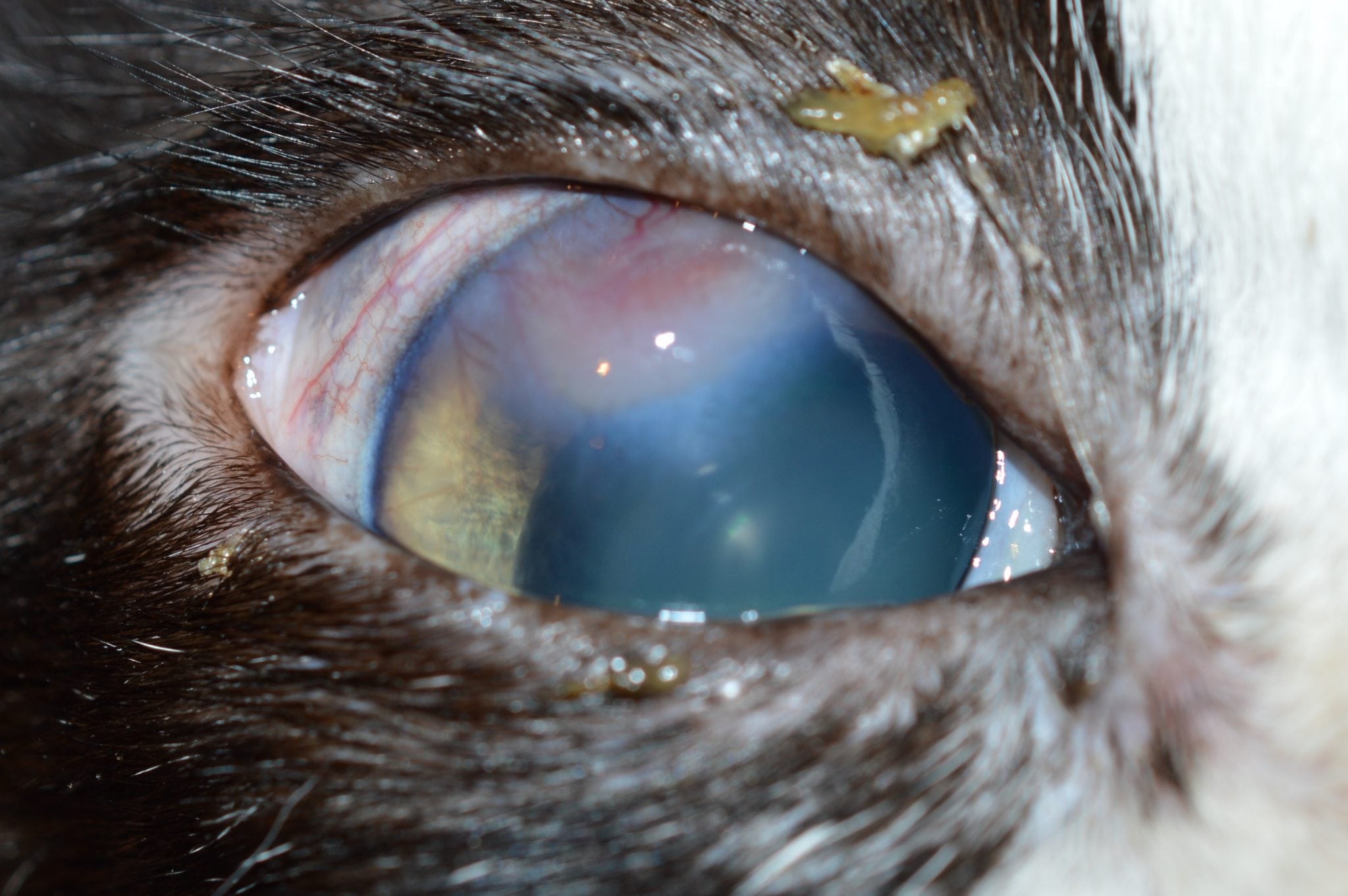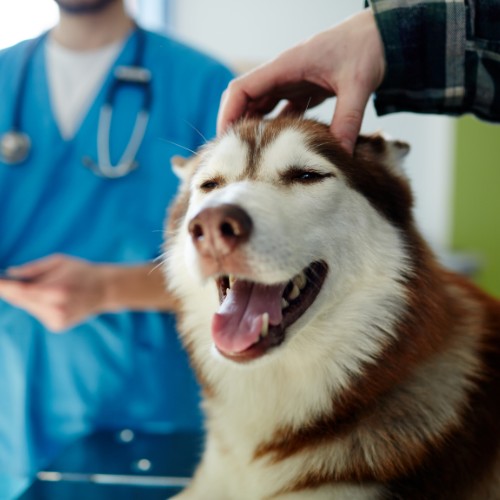Pet Herpetic Keratoconjunctivitis in Katy, TX
Pet herpetic keratoconjunctivitis is a chronic eye condition that affects the conjunctiva and cornea, primarily in cats. This condition is caused by Feline Herpes Virus-1 (FHV-1) and can lead to recurring episodes of inflammation, resulting in discomfort and potential vision issues. At Animal Eye Medical & Surgical Specialists in Katy, TX, we specialize in diagnosing and managing this condition to help your pet maintain optimal eye health.
What is Herpetic Keratoconjunctivitis?
Herpetic keratoconjunctivitis typically starts with conjunctivitis, which is the inflammation of the conjunctiva—the thin, transparent tissue covering the white part of the eye and the inner surface of the eyelids. This early stage often presents with symptoms like redness, swelling, and discharge from the eye. Without proper treatment, the condition can escalate, leading to more severe issues such as corneal ulceration and the development of blood vessels in the cornea. These complications can impair your pet’s vision and cause significant discomfort.
Corneal ulceration involves the breakdown of the cornea’s outer layer, leading to pain and increased tearing. The growth of blood vessels on the cornea, known as corneal neovascularization, is the body’s response to chronic inflammation. While this response is an attempt to heal the cornea, it can also reduce visual clarity and requires ongoing management.


Clinical Signs of Herpetic Keratoconjunctivitis
Early detection of herpetic keratoconjunctivitis is key to managing the condition effectively. The clinical signs can vary, but common symptoms include:
- Excessive Tearing or Discharge: Watery or mucous-like discharge from one or both eyes.
- Redness and Swelling: The affected eye(s) may appear red and swollen.
- Frequent Squinting or Blinking: Your pet may squint or blink more often due to discomfort.
- Visible Third Eyelid: The third eyelid may become more prominent or elevated.
- Corneal Ulcers: Painful sores on the cornea that can cause light sensitivity and pawing at the eyes.
In some cases, cats with herpetic keratoconjunctivitis may also develop eosinophilic keratitis, marked by pink or tan plaques on the cornea. This condition can further irritate the eye and cause corneal ulcers. It is often associated with FHV-1 and can be diagnosed through corneal cytology.
Causes of Herpetic Keratoconjunctivitis
The root cause of herpetic keratoconjunctivitis is Feline Herpes Virus-1 (FHV-1). This virus is widespread among cats, with over 50% of the feline population carrying FHV-1. Once a cat is infected, the virus remains in the body for life, usually lying dormant in the nerve cells. However, certain factors can trigger the virus to reactivate, leading to flare-ups of herpetic keratoconjunctivitis.
Common triggers include:
Changes in the environment, new pets or people in the household, and other stressors.
Any condition that weakens the immune system.
Medications or conditions that suppress the immune system.
Treatment Options for Herpetic Keratoconjunctivitis
Although there is no cure for FHV-1, effective management can help control symptoms and reduce the frequency and severity of flare-ups. Treatment generally involves a combination of antiviral medications, supportive care, and regular monitoring.
Key Treatment Options:
Used to reduce virus replication during flare-ups, minimizing symptoms. Administered as eye drops or ointments.
Necessary if corneal ulcers develop to prevent secondary bacterial infections.
Includes regular eye exams, lubricating eye drops, and adjustments to treatment as needed.
Specialized Care at Animal Eye Medical & Surgical Specialists
At Animal Eye Medical & Surgical Specialists in Katy, TX, we offer comprehensive care for pets with herpetic keratoconjunctivitis. Our team of experienced veterinary ophthalmologists provides personalized treatment plans tailored to your pet’s unique needs. Our services include:
Using advanced diagnostic techniques, including corneal cytology, to identify herpetic keratoconjunctivitis and associated conditions.
Individualized treatment strategies to manage symptoms and prevent flare-ups.
Regular check-ups to adjust treatment as needed and provide guidance on flare-up management.

